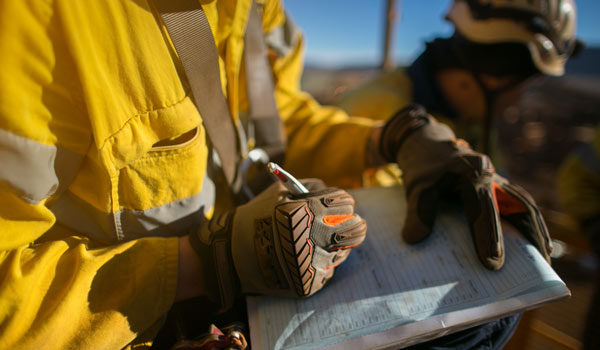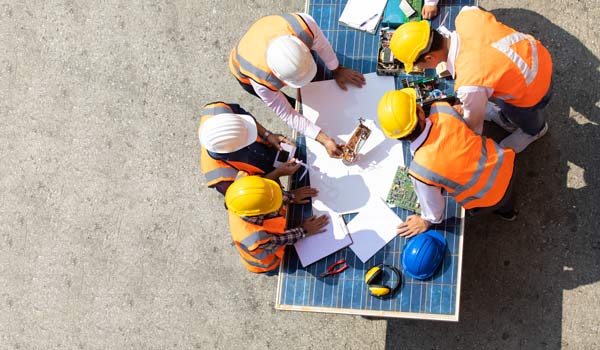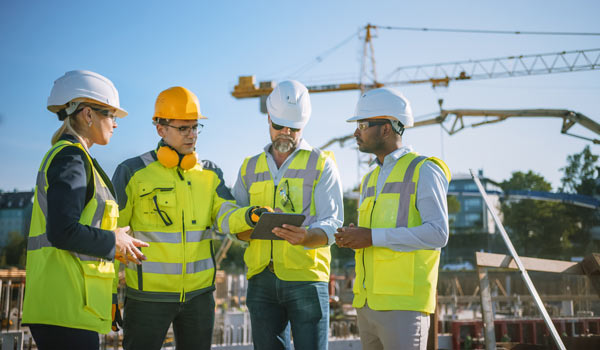Labels for Safety, Visuals and Facility ID Desktop Printers
Labels for Product, Wire and Lab ID Benchtop Printers
Labels for Safety, Visuals and Facility ID Desktop Printers
Labels for Product, Wire and Lab ID Benchtop Printers
Safety and Facility ID Desktop Printers
Product, Wire & Lab ID Desktop Printers
Pipe Marker Accessories & Mounting Brackets
Valve Lockouts & Hose Lockouts
Group Lock Boxes & Permit Control
PaintStripe Floor Marking Stencils
Maintenance and Production Tags
Calculators and Assessment Tools
Product Finders and Data Sheets
Contact construction team Explore all construction solutions
In construction, safety isn't just about numbers and regulations — it's also about protecting the people who build our world. Every safety padlock, every sign and label, every precaution taken represents a commitment to sending workers home safe at the end of the day. Navigating the complex network of construction safety organizations can be daunting, but understanding their roles empowers you to create a workplace where everyone thrives.
This guide will help you gain insights into the organizations that influence your daily work. From OSHA's watchful eye to the NFPA's life-saving codes, we'll break down how these bodies impact everything from your jobsite to your bottom line.
OSHA isn't just a regulatory body — it's the cornerstone of workplace safety in the U.S. Their standards cover a vast range of hazards, from fall protection (guardrails, harnesses and safety nets) to hazard communication (GHS labels and SDS sheets). They also enforce regulations on everything from respiratory protection to machine guarding. Most, if not all, of the following standards organizations inform or influence OSHA regulations in some way, shaping construction safety requirements.
NIOSH delves deep into the science behind workplace safety. Their research has led to recommendations and regulations, like the focus on silica dust exposure. By staying informed about NIOSH's findings, you can proactively address emerging hazards and implement cutting-edge construction safety compliance measures.
When it comes to chemical exposure, ACGIH is your go-to resource. Their Threshold Limit Values (TLVs) provide critical guidance for controlling exposure to a wide array of substances, from common solvents to welding fumes. By adhering to these TLVs, you can create a work environment that safeguards your workers’ health.
The ASSP gathers some of the leading minds in safety. It offers certifications, training programs and networking opportunities to enhance your expertise and foster a culture of safety within your organization, crucial for achieving and maintaining construction compliance.

The NFPA’s codes and standards are the gold standard for fire prevention and safety. Even if you aren't a safety professional, it is likely that you've seen the NFPA safety diamond. From fire-resistant building materials and sprinkler systems to emergency exit plans and fire extinguisher placement, the NFPA provides comprehensive guidance to ensure your construction projects are as safe as possible.
In an emergency, seconds matter. The ARC and AHA equip you and your team with the skills to respond effectively to first aid and cardiac events, potentially saving lives on the jobsite.
Natural disasters can strike without warning, disrupting projects and endangering lives. FEMA’s preparedness resources help you assess risks, develop response plans and build resilience into your construction projects.
From hard hats and safety glasses to scaffolding and ladders, ANSI sets the standards for safety equipment and materials across industries. By adhering to ANSI standards, you ensure that the products you use meet rigorous safety requirements.
These agencies play a vital role in protecting workers and ensuring the safe movement of goods. The DOL enforces fair labor practices, the DOT regulates the transport of hazardous materials, and PHMSA focuses specifically on pipeline safety. Understanding their regulations is crucial for maintaining construction compliance and avoiding costly penalties.
These organizations influence construction safety compliance and operations on a daily basis. Their guidelines and regulations impact everything from project planning and design to material selection, worker training and emergency preparedness, including:


With the right approach and tools, maintaining construction compliance can become a seamless part of your operations.
By prioritizing safety, adhering to guidelines, and staying informed about evolving requirements, you can protect yourself and workers, ensure project success, and contribute to a safer, more productive industry. Brady Corporation is dedicated to providing solutions that enhance workplace safety and identification. Explore our range of products and services to support your construction safety compliance efforts and create a safer working environment.

Expert lockout tagout devices, solutions, services, software, kits, and safety padlocks designed by Brady for your safety – your work is our priority.
Ensure Safety with Lockout Tagout
Pipe Markers, Labels, and Valve Tags – Maintain clear identification for seamless operations.
Streamline Identification with Pipe Markers
Create and print custom labels with ease using Brady’s intuitive, application-specific printers designed for durability and precision.
Elevate your Label Printing
Health and safety organizations play a vital role in protecting workers. Discover the roles, standards and relationship between these workplace safety organizations.
Learn the Relationship Between OSHA and ANSI
Discover the most common violations, take steps to keep your facility from contributing to the list and keep your workers safe.
Prevent Common OSHA Violations